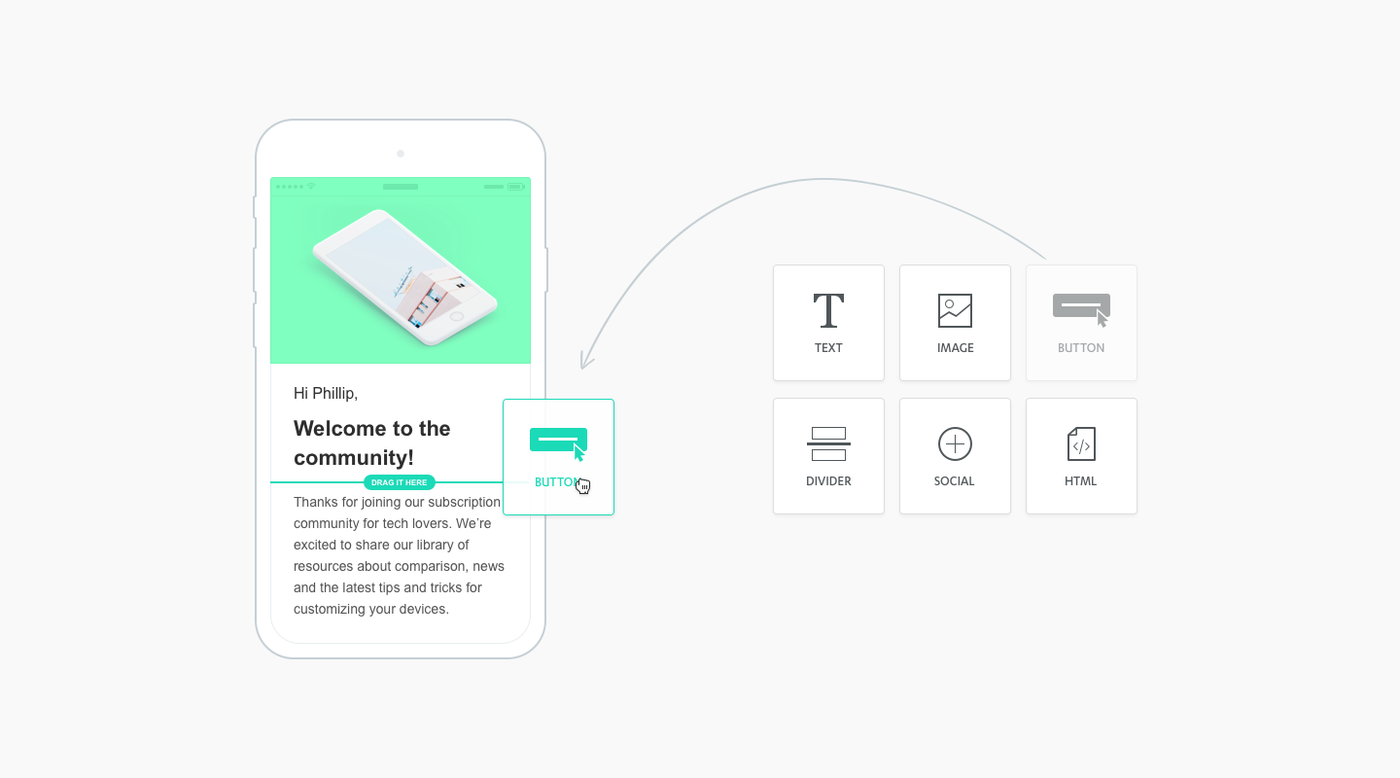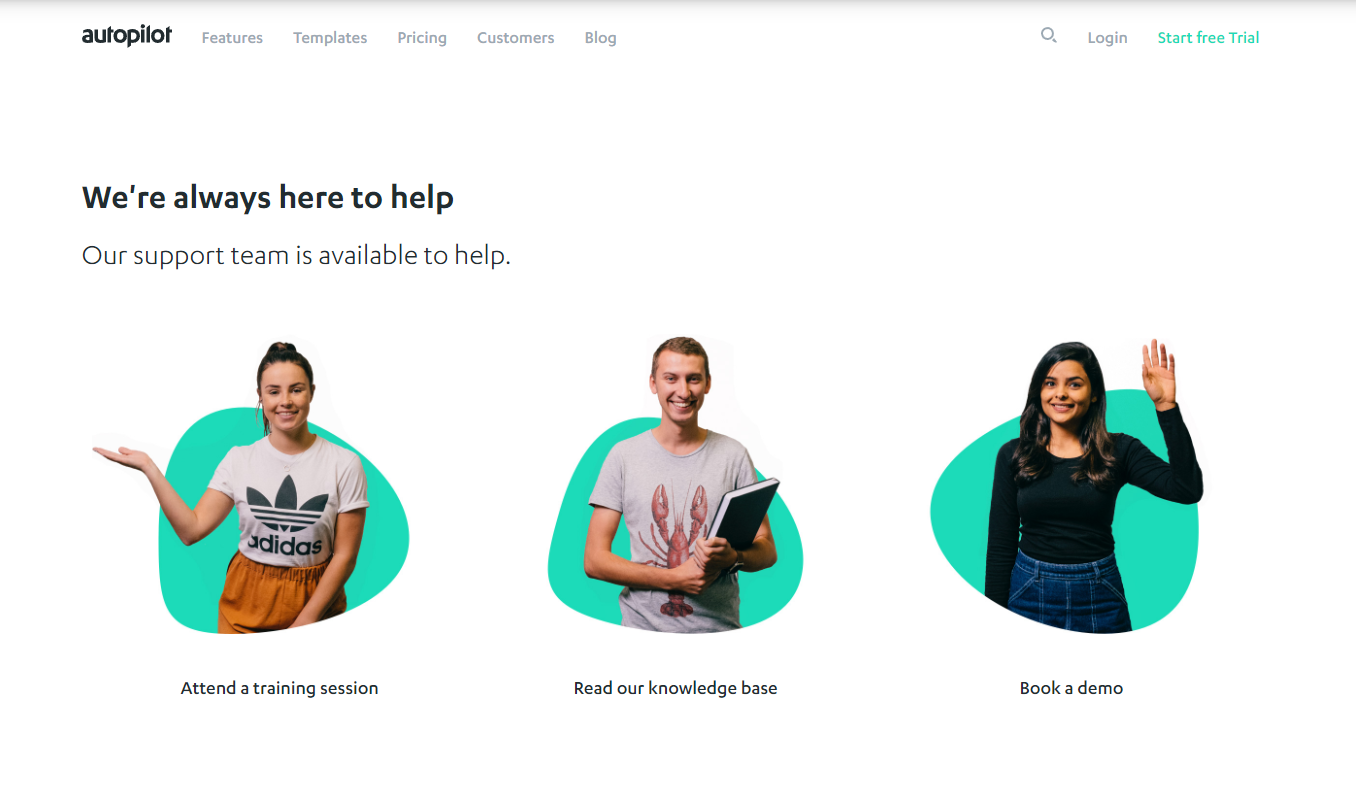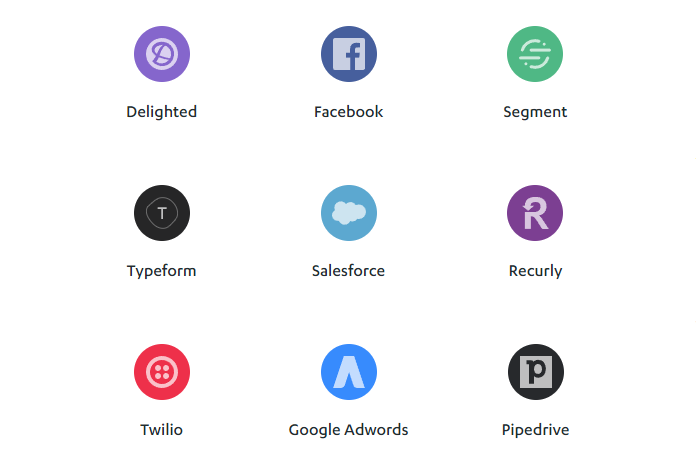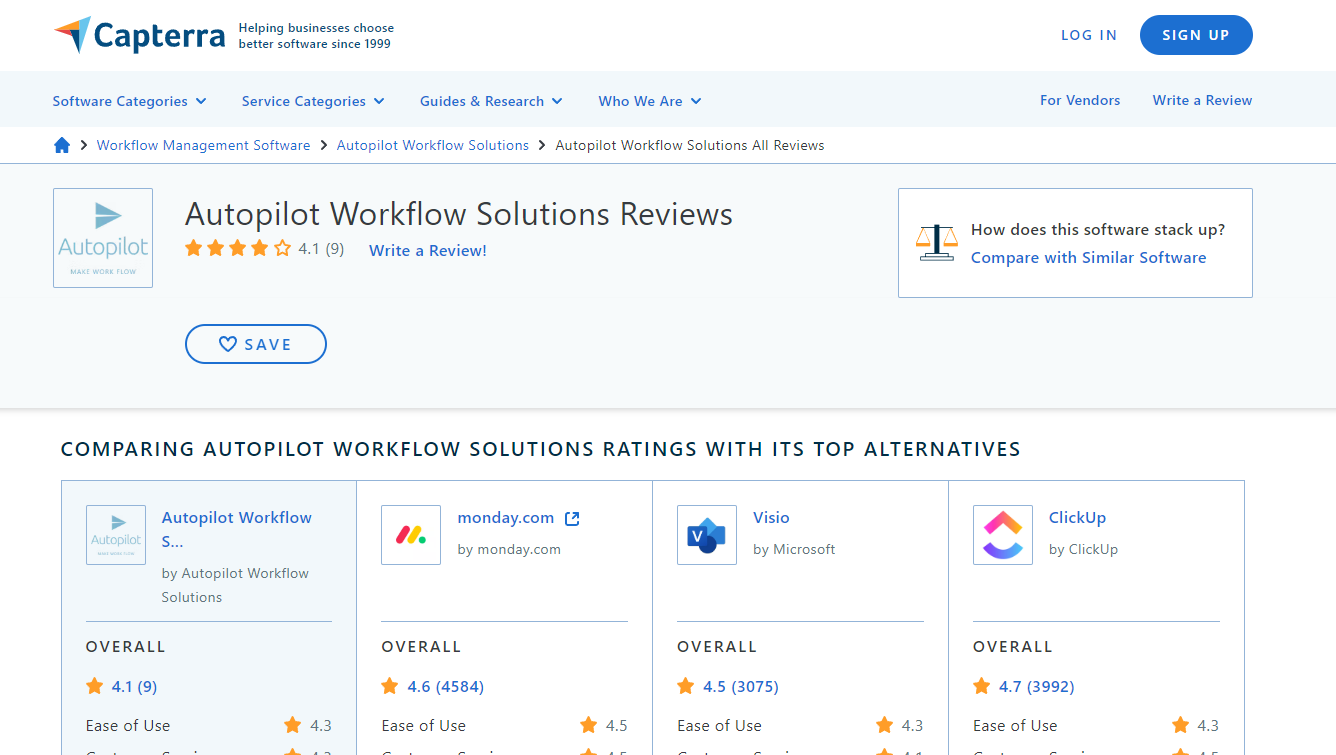When it comes to choosing the right email marketing and sales automation software for your business, Drip and Autopilot are two of the most popular options on the market. With the ability to grow your email list, create customer journeys, automate repetitive tasks, and generate more revenue, having the right platform in place can make or break your marketing success.
In this in-depth Drip vs Autopilot comparison, we evaluate the two email marketing platforms across several key criteria to help you determine which solution best fits your business needs and goals.
We’ll look at market position and popularity, ease of use, customization options, features and functionality, performance, customer support, pricing, and reviews and reputation for both platforms. With insights into the strengths and weaknesses of both Drip and Autopilot, you’ll be equipped to select the best platform to support your digital marketing efforts.
1. Understanding the Basics
Drip was founded in 2013 by Rob Walling and Mike Perham. It is a standalone email marketing and sales automation tool specifically focused on serving small businesses and entrepreneurs. With over 10,000 active customers, Drip has a strong market position and community of users.
Autopilot began as a Shopify app in 2013 under the brand Purchase Funnels. It was eventually acquired and rebranded as Autopilot in 2016 by the founders of Drip as they expanded beyond Shopify. Autopilot serves over 8,000 customers across its various software tools for automation, checkout, email, SMS, and more.
While Autopilot has a broader set of marketing tools, Drip is focused specifically on sales automation and converting leads through email and drips. Both have passionate user communities.
With strong reputations and thousands of customers, Drip and Autopilot both have solid market footing. Drip focuses solely on email and sales automation, while Autopilot offers a wider range of complementary marketing tools.
2. Features and Functionality
Automation
Drip
Drip focuses specifically on sales automation through emails, landing pages, and forms. You can create multi-step workflows with a drag-and-drop builder to customize the entire customer journey. Workflows support conditional logic, tags, segments, wait steps, and more.
For example, you could set up a 5 email sequence to nurture leads, with different paths based on whether they open emails or click links. Workflows can also integrate with other tools like Zapier to connect hundreds of apps.
Overall, Drip provides a robust marketing automation platform purely focused on email marketing and conversions.
Autopilot

Autopilot includes a visual Customer Journey Builder to create multi-channel customer experiences across email, SMS, webhooks, and more. You can build complex conditional logic, segment contacts, set delays, and customize through their Node System.
For example, you could create a 7-touch email sequence for leads, triggered by a form fill, with additional SMS touches if they don’t open certain emails. You can track engagement across channels and use that data to further personalize messages.
In addition to customer journeys, Autopilot has landing pages, forms, checkout, and cart abandonment functionality to cover the entire customer experience.
Winner: Autopilot
While both platforms offer advanced automation capabilities, Autopilot edges out Drip by providing more channels and tools beyond just email marketing. The ability to coordinate SMS, push notifications, webhooks, and more within the same customer journeys makes Autopilot more powerful and customized for generating conversions.
Email Templates
Drip
Drip provides beautiful pre-designed email templates that you can customize to match your brand. They have templates for welcome sequences, promotions, announcements, newsletters, and more.
All templates are mobile-responsive by default. You can edit colors, fonts, content blocks, images, and layouts. Drip also includes the raw HTML and CSS if you want to completely customize a template. Dynamic content and contact field personalization can be added with liquid tags.
While Drip has some nice-looking templates, the selection is relatively limited compared to other platforms. You may need to start from scratch if you want more advanced branded templates.
Autopilot
Autopilot offers over 100 professionally designed email templates for every use case such as promotions, announcements, newsletters, onboarding drips, and more. The templates feature bright colors, dynamic content blocks, strong CTAs, and mobile optimization.
In addition to using the pre-made templates as is, you can fully customize colors, fonts, content, images, layouts, and code through the drag-and-drop editor. You can also develop HTML email templates from scratch if needed. Advanced users can utilize the Raw Template feature for maximum control.
Overall, Autopilot provides more email template options covering a wider variety of design styles and use cases out of the box. They give you the flexibility to use the templates as is or customize them to perfectly match your brand.
Winner: Autopilot
With over 100 professionally designed email templates that can be easily customized, Autopilot beats Drip when it comes to the quality and variety of templates for sending beautifully branded emails. The larger library and pixel-perfect customization options make Autopilot the winner.
Segmentation
Drip
Drip allows you to create segments based on contact behaviors, profiles, tags, custom fields, dates, email metrics, and more. You can make segments as simple or complex as needed using their filtering rules to engage your subscribers and sell more products.
For example, you could make a segment for people who signed up in the last 30 days AND opened a specific onboarding email. Or contacts tagged as VIPs who have made 2+ purchases.
Segments dynamically update as your contacts meet or fail the rules criteria. You can then target segmented groups with custom messaging across emails, landing pages, forms, and workflows.
Overall, Drip provides robust segmentation features purely focused on email and conversions.
Autopilot

Autopilot offers similar segment creation based on contact behaviors, dates, tags, custom fields, activity metrics, and more. You can get very advanced with segment logic as needed.
Additionally, Autopilot allows you to create segments across ANY event or data layer in your account, not just email. For example, you could segment all contacts who clicked a specific link in an SMS message or viewed 2+ pages on your site in a visit.
This cross-channel segmentation gives you more flexibility to personalize messaging across multiple mediums to better target and convert each segment.
Winner: Autopilot
Both Drip and Autopilot make segmentation easy based on a wide range of filtering criteria. However, Autopilot comes out ahead due to its cross-channel segmentation capabilities using data beyond just email metrics. Having a unified view of each contact to segment across channels provides a more powerful and customized experience.
Analytics
Drip
Drip provides detailed email analytics to help you understand and optimize your email performance. You get insight into opens, clicks, unsubscribes, send times, links clicked, and more. Charts visualize trends and metrics over time for top-level analysis.
You can filter email reports by timeframe, campaign, tags, and segments to drill into specifics. Heatmaps show you exactly where subscribers clicked on each email template. A/B testing lets you trial email subject lines and content variants.
Overall the email analytics in Drip give you what’s needed to improve email deliverability, opens, clicks, and conversions.
Autopilot

Autopilot also offers robust email analytics around opens, clicks, unsubscribes, send times, links, and more. Dynamic charts help spot performance trends. You can filter reports for deeper analysis as needed.
Additionally, Autopilot provides a 360-view customer timeline showing every contact and event across all channels including email, SMS, website, forms, chat, and more. This gives greater insight into the full customer journey.
Autopilot also lets you make custom dashboards to display key metrics from different tools on one screen for quick, top-level insights. More data means better optimization decisions.
Winner: Autopilot
Both platforms provide deep email analytics for optimization. However, Autopilot wins with its 360 customer timeline and ability to track engagement beyond just email. Having unified reporting and dashboards provides greater visibility to connect interactions across all channels for getting a complete view of customer engagement and journeys.
Unique Features
Drip
One standout capability offered by Drip is robust e-commerce functionality without needing another platform. You can build full shopping experiences with carts, discounts, taxes, shipping, and more. Drip also has strong workflows and automation specifically tailored for e-commerce businesses.
Other notable features include built-in A/B testing for emails and landing pages, a custom coding environment to build your tools, Zapier integration to connect other apps, and built-in education/courses on email marketing strategies.
While the features are more limited in scope, Drip attempts to provide a lot of value on top of core email marketing that specifically caters to e-commerce stores and online businesses.
Autopilot

Unique features offered by Autopilot include drag-and-drop checkout customization, built-in SMS, Messenger, and WhatsApp messaging and automation, push notification integration, HelpDocs knowledge base tool, predictive content block recommendations for emails powered by AI, and social proof notifications based on user behaviors.
Autopilot seems to focus more on providing a suite of complementary marketing tools that work together, allowing you to interact with customers across more channels to increase engagement.
Winner: Tie
Both platforms offer unique capabilities. Drip provides more robust e-commerce features specifically for selling products online. Autopilot has a broader set of integrated tools for engaging customers across more channels. There are good reasons to choose either platform based on which unique tools best align with your business needs and goals.
3. Ease of Use
Drip
Drip’s user-friendly interface is clean, modern, and focused specifically on email, landing pages, and e-commerce shopping experiences. The navigation is simple with just 4 main tabs – Contacts, Campaigns, Store, and Analytics. Even as a beginner, it’s easy to find your way around.
The workflow builder simplifies creating multi-step automation with a drag-and-drop UI. Editing templates and building landing pages is also intuitive with drag and drop blocks and hiding more advanced code.
Overall Drip does a great job keeping the experience centered around core email marketing, contacts, and sales. This makes it easier to learn compared to platforms trying to do more. The UI avoids complexity.
Autopilot

Autopilot has a more robust set of marketing tools spanning email, SMS, cart, checkout, forms, popups, automation, and more. This can seem a bit overwhelming for beginners at first. The left nav menu is longer with more options.
However, Autopilot makes up for it with hundreds of helpful articles, tooltips, modals on features, and free live onboarding sessions to help you ramp up. Many areas like building emails or customer journeys use a simple drag/drop builder.
There is more power and complexity available in Autopilot if you need it. But beginners can ease in using just the essential tools thanks to great educational content.
Winner: Drip
While Autopilot offers more features, Drip wins on ease of use for its simplistic interface focused narrowly on core email marketing tools. The straightforward nav and workflows enable beginners to get up and running faster without much ramp-up time needed. Autopilot has a steeper learning curve managing the broader set of tools.
4. Email Deliverability
Drip
Drip has strong email deliverability built-in with features like sender authentication, domain whitelisting, inbox placement testing, spam testing, email rendering checks, and more. Templates are optimized for spam filters automatically. Drip also lets you preview your emails across different email clients and devices to ensure consistency and proper rendering.
For more advanced deliverability, Drip offers custom IP addresses, reverse DNS setup, custom DKIM/SPF records, and stays up to date with the latest best practices to ensure your emails reach the inbox.
Autopilot

Autopilot also prioritizes email deliverability through inbox placement tools, spam testing, email rendering checks, compliance policy creation, and templates optimized for filters to avoid the spam folder.
You can preview emails across mobile devices or popular email clients to confirm branding, links, images, and copy display properly regardless of email client. Whichever plan you choose, Autopilot incorporates deliverability best practices allowing you to scale with confidence in avoiding blacklisting issues.
Winner: Tie
Both platforms provide excellent deliverability out of the box through modern standards, optimization for filters, and preview tools. Advanced users have access to more robust infrastructure and policies for protecting the sender’s reputation. With meticulous email delivery infrastructure and best practices, Drip and Autopilot tie in when it comes to making sure your emails reliably land in subscribers’ inboxes.
5. Customer Support and Community
Drip
Drip offers email support with a 24-48 hour targeted response time. They also provide phone support on business days for high-priority issues. Support is available as part of all paid plans. An online knowledge base contains help docs, videos, and training resources for self-troubleshooting issues that may arise.
The Drip User group on Facebook has over 7,500 members and is active daily for discussions, questions, and tips between users of the platform. Overall Drip users report quality support responses from knowledgeable reps.
Autopilot

Autopilot provides 24/7 live chat assistance in addition to email support no matter your account plan level, which is extremely useful for urgent issues or questions. Phone support is also available if needed for any critical inquiries that live chat and email cannot resolve timely. Autopilot is known for exceptionally fast and high-quality customer success managers.
Helpful self-serve support resources include 4000+ help center articles created by their team, an online community forum for asking other users questions, interactive walkthroughs, and 1-on-1 onboarding. Autopilot’s Facebook group has over 3,000 engaged members sharing tips daily.
Winner: Autopilot
While both platforms offer solid support options and active Facebook user groups, Autopilot edges out Drip by providing 24/7 live chat assistance in addition to fast email responses for a more worry-free experience. Their extensive self-serve resources also make it easy to find help articles and tutorials on your own without needing to wait for a rep.
6. Integrations
Drip
Drip integration offers connections to over 500 native integrations with other apps and platforms through Zapier. This allows you to connect Drip workflows with webinar software, chat tools, accounting systems, other email platforms, and more without needing engineering resources. While capabilities are expandable through Zapier, Drip does not offer much for native app ecosystem integrations out of the box.
For example, you could set up automation with any integration platform to add webinar attendees to a Drip workflow in just a few clicks, notify Slack when a form is filled, or update contact tags in Drip when order status changes in Shopify to connect data between tools.
Autopilot

Autopilot has over 1000 native integrations to connect with popular applications in almost every category including email, webinars, chat, CRM, e-commerce, marketing, analytics, payments, and more. You can trigger automation and pass data between apps without needing Zapier or engineering work.
For example, sync Shopify customers to Autopilot in real-time, set up a Zoom registration form to automatically add attendees to a nurture workflow, or display social proof when someone completes an important conversion event like a high-value purchase.
There are many popular Autopilot integrations and the platform focuses heavily on its integration ecosystem to increase capabilities between complementary martech tools.
Winner: Autopilot
While Drip offers hundreds of the most popular integrations through Zapier, Autopilot wins by having over 1000 native integrations with every major app constantly working across dozens of categories. This helps you save time and saves users money on Zapier fees while providing tighter connections between your tech stack, especially when using Autopilot’s built-in tools like SMS, carts, and forms.
7. Pricing
Drip
Drip has a simple pricing structure based on the number of contacts in your list. The lowest plan costs $39/month for up to 2,500 people. You can sign up for a free trial on the platform to test out the software before committing to a paid plan.
All plans include unlimited emails, and access to core features like automation, analytics, and integrations. Higher tiers offer more contacts, additional CRM, and e-commerce integrations. You can compare multiple versions and use each version generated to see which one has better open rates and how much revenue you can expect.
Overall, Drip’s platform offers competitively priced and its free tier provides excellent capabilities for early-stage businesses, even those with specific requirements.
Autopilot

Autopilot has 4 self-serve paid plans, more affordable options for larger contact volumes, and custom enterprise quotes:
- Starter – Free for 500 contacts forever
- Growth – $49/month for 5,000 contacts
- Scale – $199/month for 25,000 contacts
- Pro – $999/month for 150,000 contacts
Businesses with large databases will appreciate more contacts per dollar compared to Drip at higher tiers. Nice perks like SMS credits, priority support, and all product features are included.
Winner: Autopilot
Autopilot beats Drip on pricing for mid-size and enterprise business needs. More contacts per dollar on paid plans above the entry-level tier while packing all features into each plan make Autopilot more cost-effective long term. Drip contact limits can get extremely expensive for larger lists.
8. Reviews and Reputation
Drip
Drip reviews on platforms like G2, Capterra, and Software Advice rate them very highly for core email marketing automation capabilities. Users praise the easy learning curve, good support, and workflows tailored for e-commerce stores specifically.
Some negatives mentioned involve the lack of email templates, expensive pricing for larger contact lists, and missing standalone tools that then require multiple platforms.
But overall reviews reflect Drip as a leader and pioneer in the email marketing and sales automation space, known for enabling great traffic and lead generation results through excellent segmentation, customer behavior, and conversion-focused tools.
Autopilot

Reviews of Autopilot are overwhelmingly positive, even more so than Drip when you analyze review distribution across software comparison sites. Users highlight the all-in-one suite of marketing tools spanning email, SMS, cart, checkout, forms, popups, automation, and more that work cohesively under one platform to provide unique value.
Some downsides noted include the steeper learning curve upfront compared to simplistic email options which can overwhelm at first when creating an email marketing strategy. However support quality helps overcome the initial ramp-up time according to most Autopilot reviews.
Winner: Autopilot
While both services have stellar reputations and reviews, Autopilot edges out Drip for having an even higher percentage of 5-star reviews reflecting greater user satisfaction and the ability to efficiently deliver exceptional email service.
Offering more marketing channels uniquely through one integrated platform results in extremely happy customers who prefer having tools work together compared to piecing together separate software.
9. FAQ’s
Drip FAQs
- What types of businesses should use Drip?
Drip is best suited for e-commerce companies, marketers, coaches, consultants, and small service businesses focused on email marketing and converting leads through automation. - Does Drip have email templates?
Yes, Drip offers beautiful pre-designed email templates across different categories that you can customize to match your brand. However, the template selection is more limited compared to other platforms. - Is Drip easy to use?
Drip prioritizes usability with a simple, clean interface. Workflows, emails, and landing pages use drag-and-drop builders so beginners can get started quickly without advanced skills.
Autopilot FAQs
- What does Autopilot’s all-in-one marketing suite include?
Autopilot brings together email, SMS, cart, checkout, forms, popups, customer journeys, and more into one integrated platform. This consolidates digital marketing efforts. - Does Autopilot offer live support?
Yes, Autopilot stands out by providing 24/7 real-time support through live chat in addition to email and phone support options from the helpful support team. - Can Autopilot integrate with other software I use?
Autopilot has over 1000 native integrations with popular software across dozens of categories so you can connect your martech stack and trigger automation between apps.
Final Thoughts
Choose Drip if…
Drip is an excellent choice if you want a platform focused specifically on building out email marketing, segmentation, automation workflows, and shopping experiences. The simple interface and range of e-commerce features make it ideal for online retailers and coaches running membership sites.
Drip also shines if you want an affordable entry-level email and conversion platform that you can grow into over time.
But what if this platform isn’t for you? Well, I recommend looking at some Drip alternatives to get a sense of what other options exist.
Choose Autopilot if…
Autopilot is the better pick if you’re looking for an all-in-one marketing platform to bring multiple channels like email, SMS, popups, and forms together. The breadth of integrated tools provides flexibility as your needs evolve beyond basic email nurturing. Autopilot also stands out for extensibility through native app integrations.
If you want to connect your martech stack or have larger subscriber lists, Autopilot is likely the better choice.
Choosing the right email and conversion platform for your business needs and budget is critical, so please reach out in the comments if you have any additional questions we can help answer! Comparing Drip and Autopilot in depth enables you to make the best decision for achieving your growth goals this coming year and beyond.
